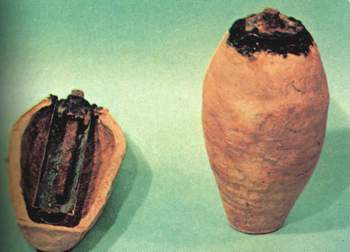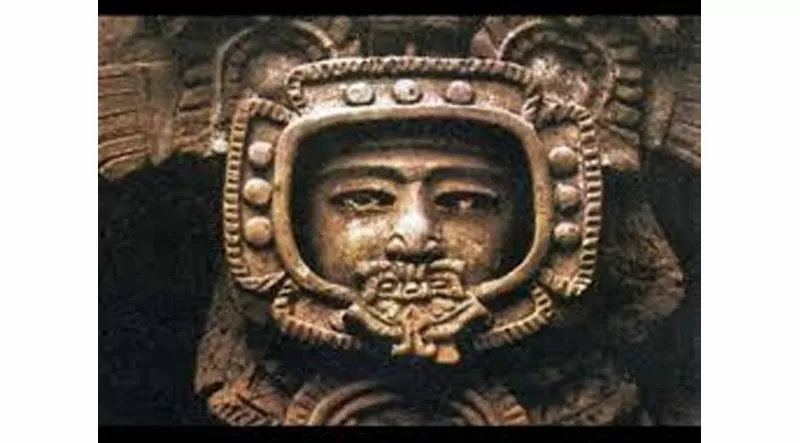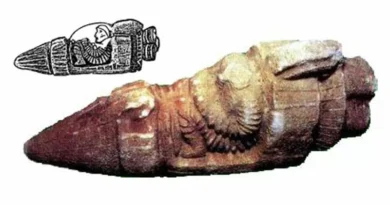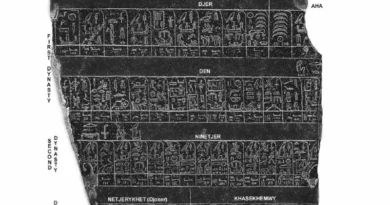An Inexplicable Mystery: The Ooparts
The secret history of humanity
Images and objects depicted in books and museums show how humanity has followed a process started from a primitive stage then proceeded towards the development of culture and science.
Yet many things speak of objects found in it that are not consistent with a natural process of humanity ‘because they think that what happened is different from what science has accustomed us.
The ooparts not fit the established pattern of prehistory but count on the existence of advanced civilizations before the birth of oldest known cultures. Although these findings are well documented and well known, many historians continue to ignore those anomalies.
Do they have fear of rewriting the history? These found objects ranging confirm ancient stories and legends of a humanity that has accelerated its evolution. What I propose is a collection of found and cataloged objects “out of their time.”
The description of some Ooparts
1) The column Ashoka
A testimony of the metallurgical ability in Dheli (India) is the column of Ashoka, over 7 meters high with 40 cm of diameter and weighing 6 tons. It carries at the base an inscription which epitaph for the king Chandra Gupta II who died in 413 A.D After thousands of years the column shows an astonishing conservation to say the least.
The smooth surface seems polished brass, after 16 centuries any mass of iron exposed to bad weather like those of India, monsoon winds and rains would have rusted it. Iron production and preservation techniques far outweigh those of the fifth century. Who were the metallurgical technicians who produced such a marvel – perhaps even thousands of years ago? Aliens?

2) The lamp Dendera
In Dendera, an Egyptian locality, in the Ptolemaic Temple of Hathor, there are strange bas-reliefs that have intrigued scholars for years, one of them marked with the number 17 shows some Egyptian priests who operate those that appear as oblong tubes.
Each tube has a snake that extends throughout its length. The engineer Henry Kjellson in his book “Forvnune Teknik” (disappeared technology) pointed out that in the hieroglyphics those snakes are described as “seref” which means to illuminate and believes that it refers to some form of electric current.
At the far right of the low relief appears a box on which resides an image of the Egyptian god Atum-Ra that identifies the box as a source of energy.
Engineer Alfred D. Bielek has identified a braided cable attached to the box as an exact copy of today’s illustrations representing a bundle of electrical wires. The cables starting from the box arrive at the base of the tubular objects, each of which rests on a support called DJED (LO ZED) which Bielek identified as a high-voltage isolator.
Did the Egyptians know about electric lamps? Moreover, as they would have done to make the hieroglyphics in the middle of the pyramids where it was completely dark, on the walls and ceilings there is not the slightest trace of burns or soot that would have been caused by the torches in use at the time.

4) The computer Antikytera
A group of divers a few days before Easter of 1900 plunged into the Greek island of Antikytera and discovered the wreck of a ship full of marble and bronze statues and various artifacts dated between 85 A.C. and 50 A.C.
Among the finds stood out a shapeless fragment of corroded bronze and rotten wood, everything was sent to the National Museum in Athens.
The fragments of wood, in drying, split open revealing the pattern of a series of gears similar to those of a modern clock. In 1958, Dr. Dek J. De Solla Price successfully reconstructed the appearance and use of the machine. The wheel system calculated the annual movements of the sun and moon.
he device was therefore not a clock, but a sort of calculator that could show the past and present positions of the sky in the past.

5) The battery of Bagdad
What the Australian archaeologist Wilhelm Konig discovered in 1958 is unbelievable. While rummaging in the basement of a museum, he found a 15 and a half cm tall vase of yellow clay, dating back to 2000 years ago containing a 12cm copper cylinder, for 4cm.
The top of the cylinder was welded with a 60/40 lead-tin alloy comparable to today’s best welds. The bottom of the cylinder was capped with a copper disk and sealed with bitumen and asphalt. Another layer of insulating asphalt sealed the upper part and also held an iron rod suspended in the center of the copper cylinder.
The auction showed that it had been corroded by acid.
Dr. Konig understood that the configuration was not due to unforeseeable circumstances but that the clay pot was nothing more than an ancient electric battery This battery was located in the main museum in Baghdad until a few years ago before the war, looting, occupation dated childbirth -persiana and it has been dated between 248 AC and 228 AC

6) A Neanderthal man
In 1921 a skull dated 38,000 years ago was found in Zambia, now found in the natural history museum. The skull on the left side shows a perfectly circular hole that strangely does not show radial lines around the same hole or other signs that indicate that it was produced by an arrow or a spear.
In the wall opposite the hole the skull is split and the reconstruction of the fragments shows that the find was broken from the outside towards the inside as if it had been a rifle shot. Forensic experts state that nothing could have been different from a high-speed exploded shot. Did anyone own a 38,000-year-old gun? A more advanced race than human beings?

7) Where does this skull come from?
In 1927 in an ancient temple of Mayan city in Belize Lubaantum it was discovered a mysterious crystal skull.
The skull carved from a single block of high crystal 12cm long and 17 wide 12 has many anomalies discovered during the analysis carried out in 1970, according to scientists form a first sketch was given using probably the diamond for the step of polishing and final form it should have been used sand of silicon and water, but if this were true would have required 300 years of work crystals to achieve this result, literally unthinkable for the ancient times in which it was made.

8) The stones of Dott.Cabrera
Twenty thousand stones and tablets decorated with a large assortment of engravings, many of which are anachronistic. Several of the stones found are made of gray andesite of a semicrystalline granitic matrix, very hard to be engraved.
The people of Ica in Peru usually find these stones since centuries since 1500, on these stones are depicted scenes of surgery, transfusions, caesarean sections, operations on the lungs, kidneys, removal of tumors. Important open-heart operations also appear to the brain, in others even a brain transplant itself. Possible?

If you liked the article, share it. Cesare Valocchia




